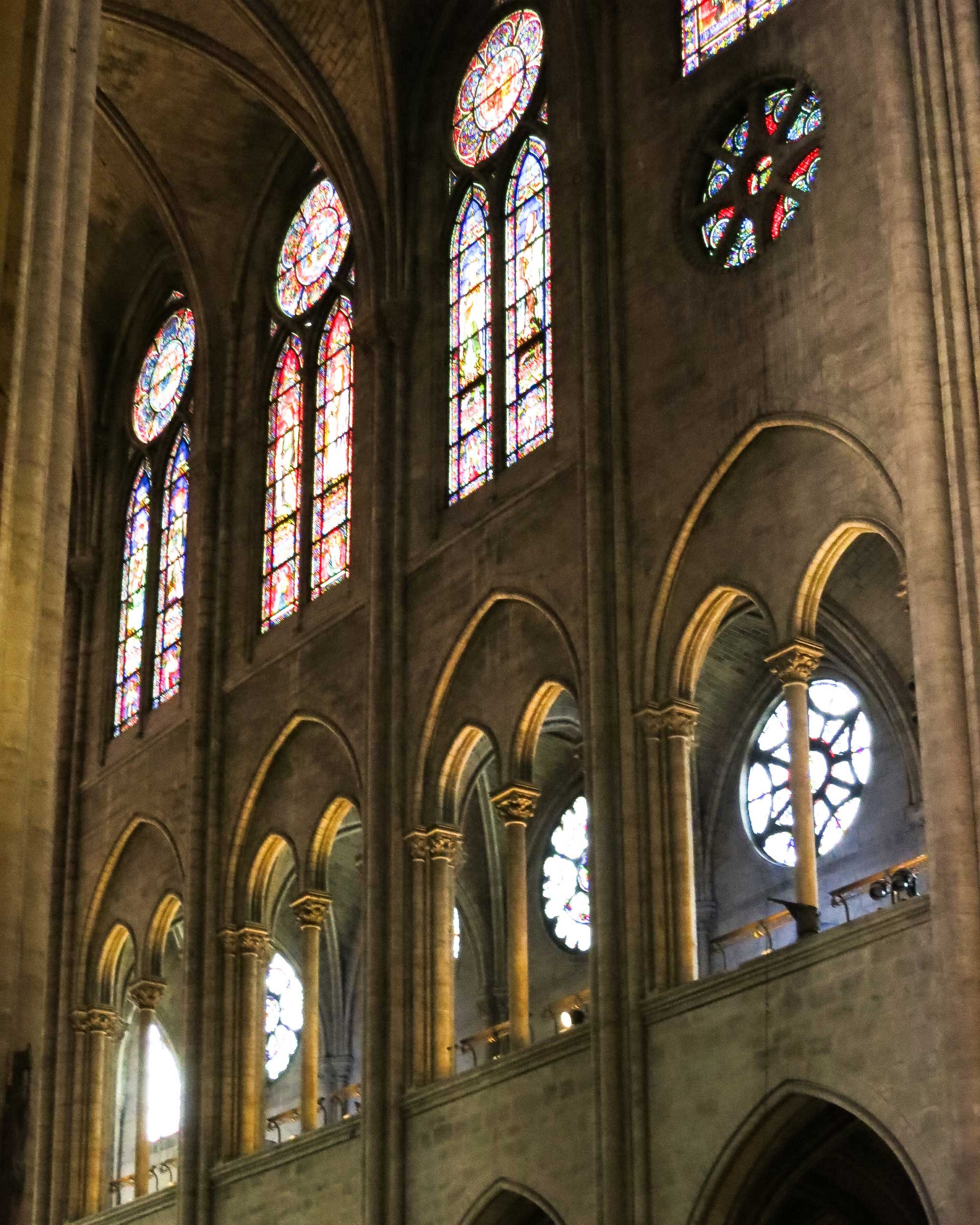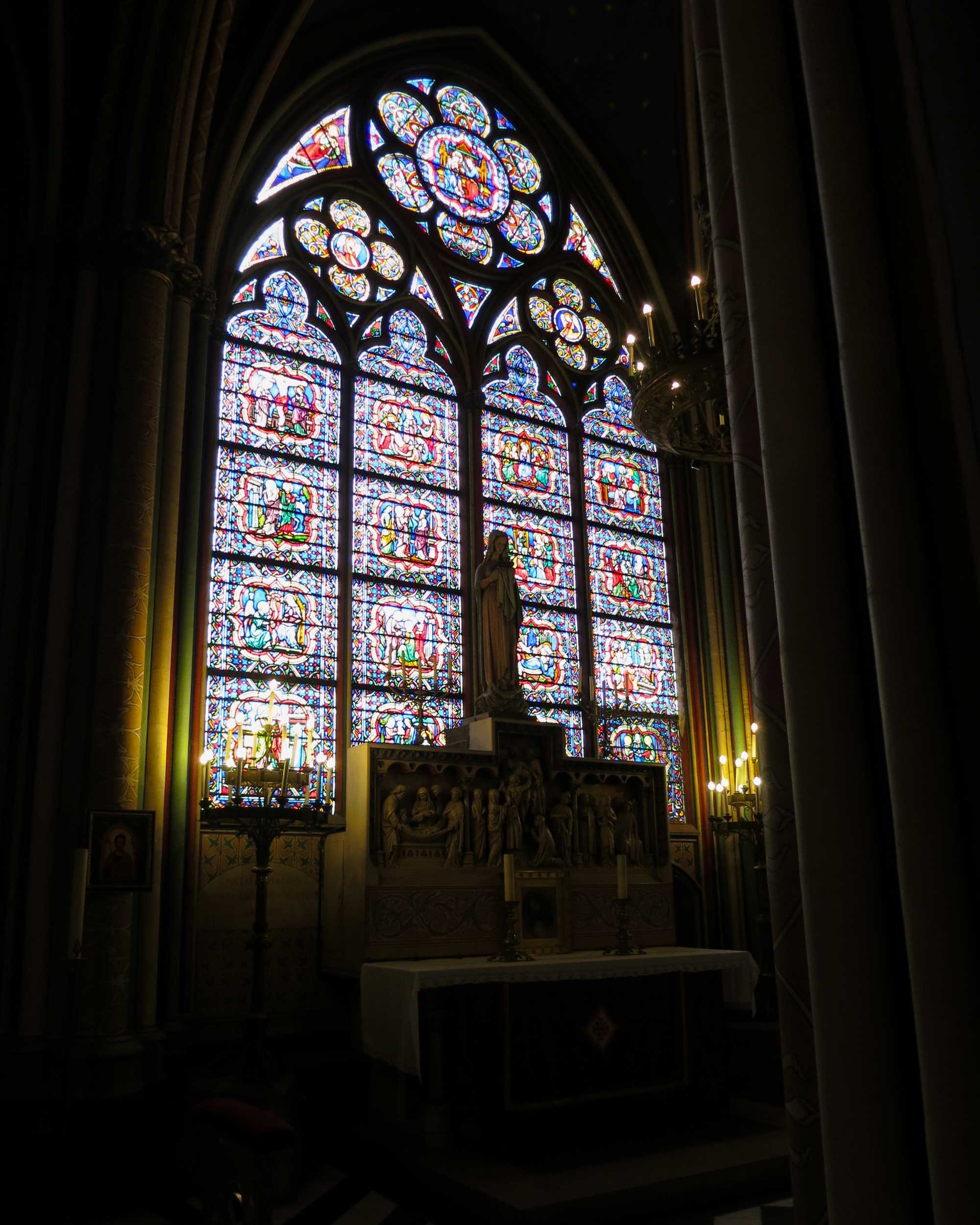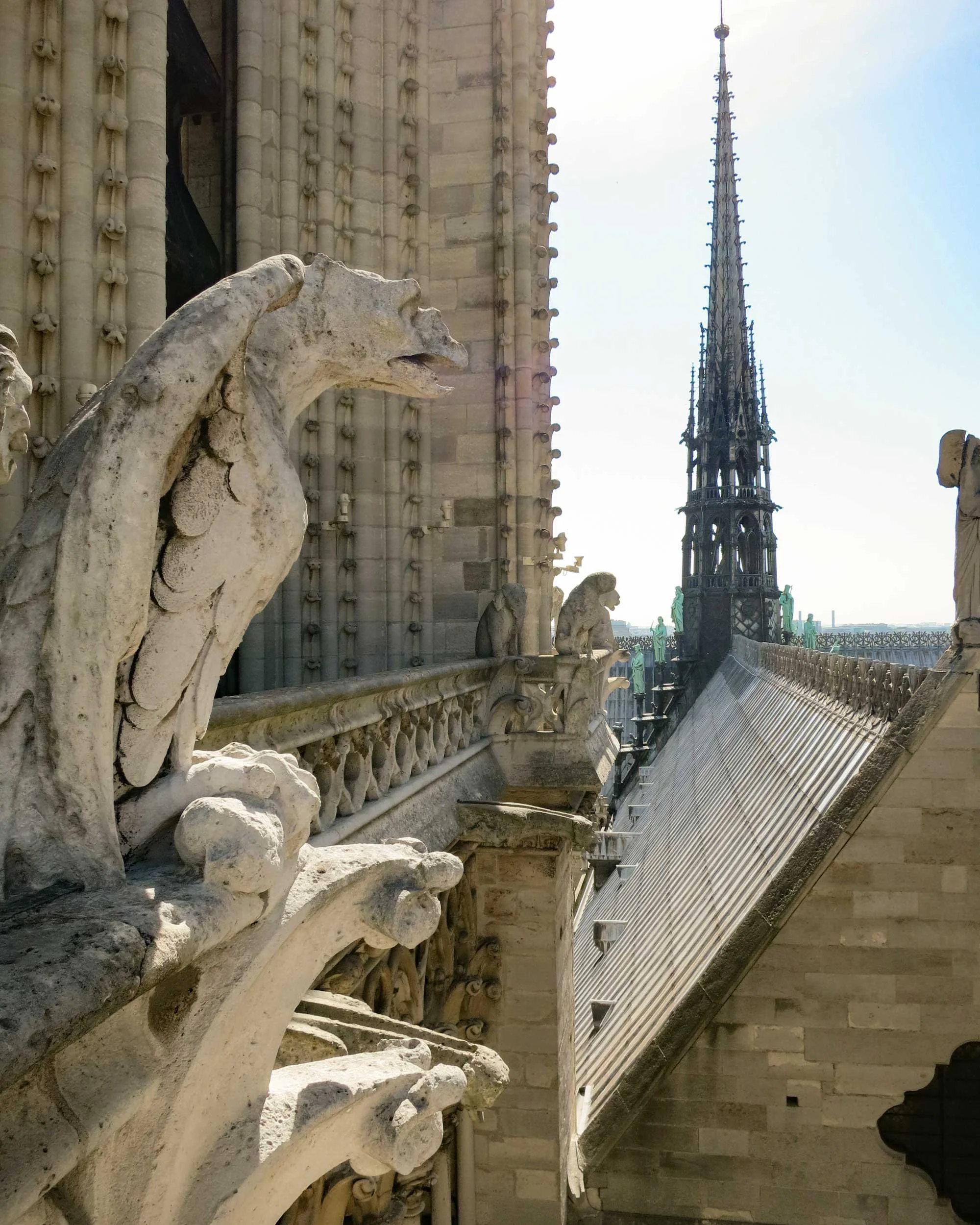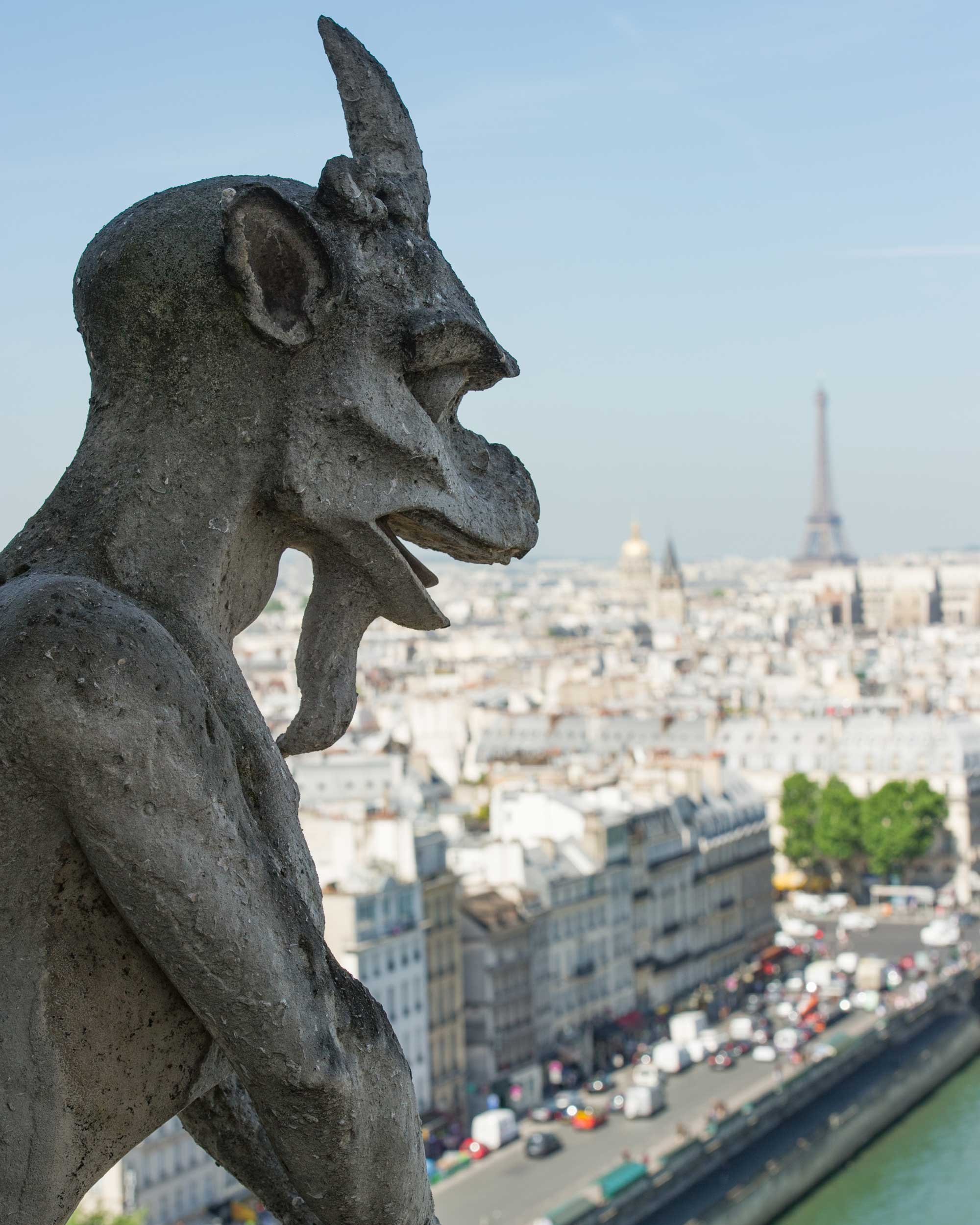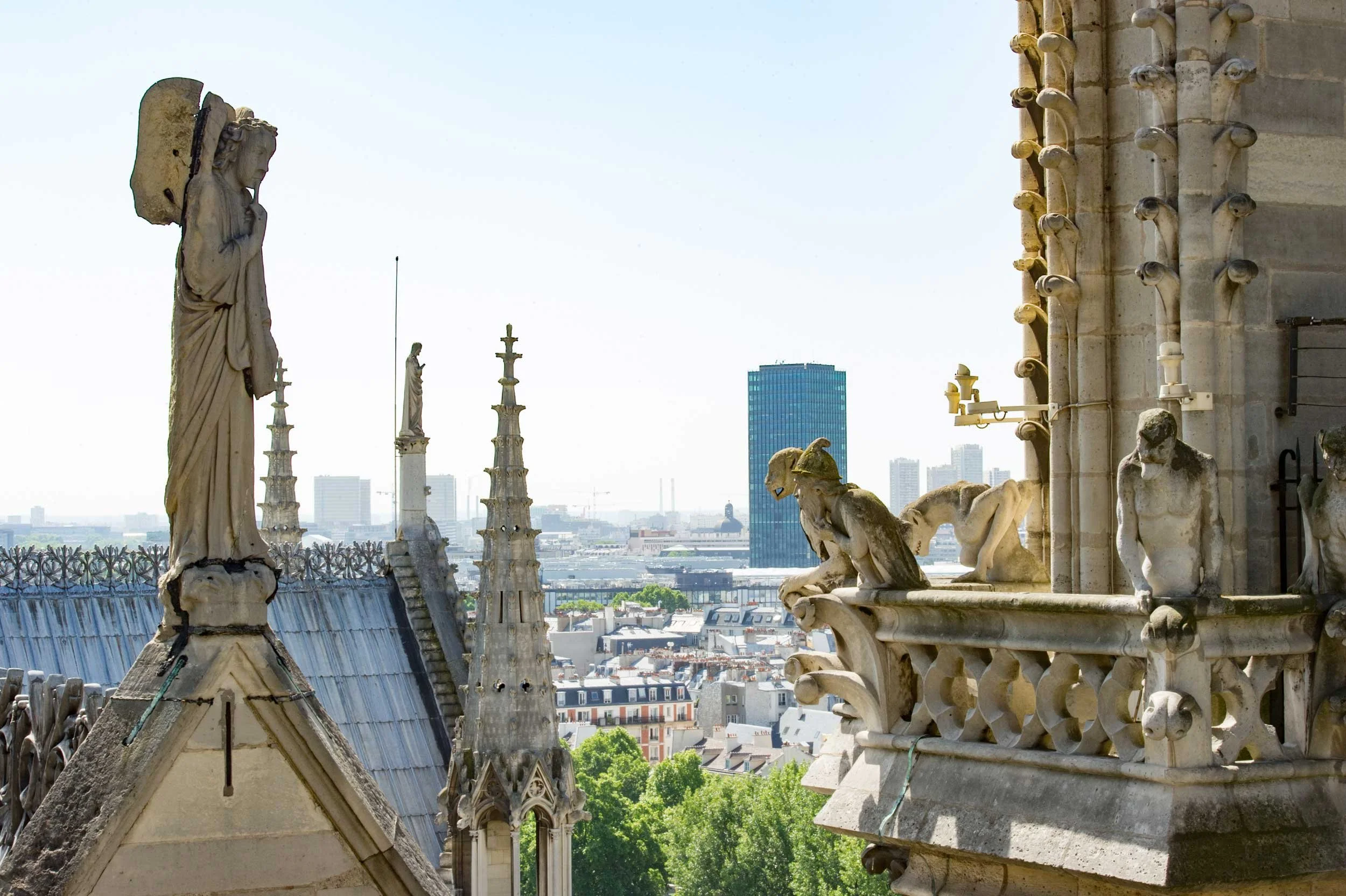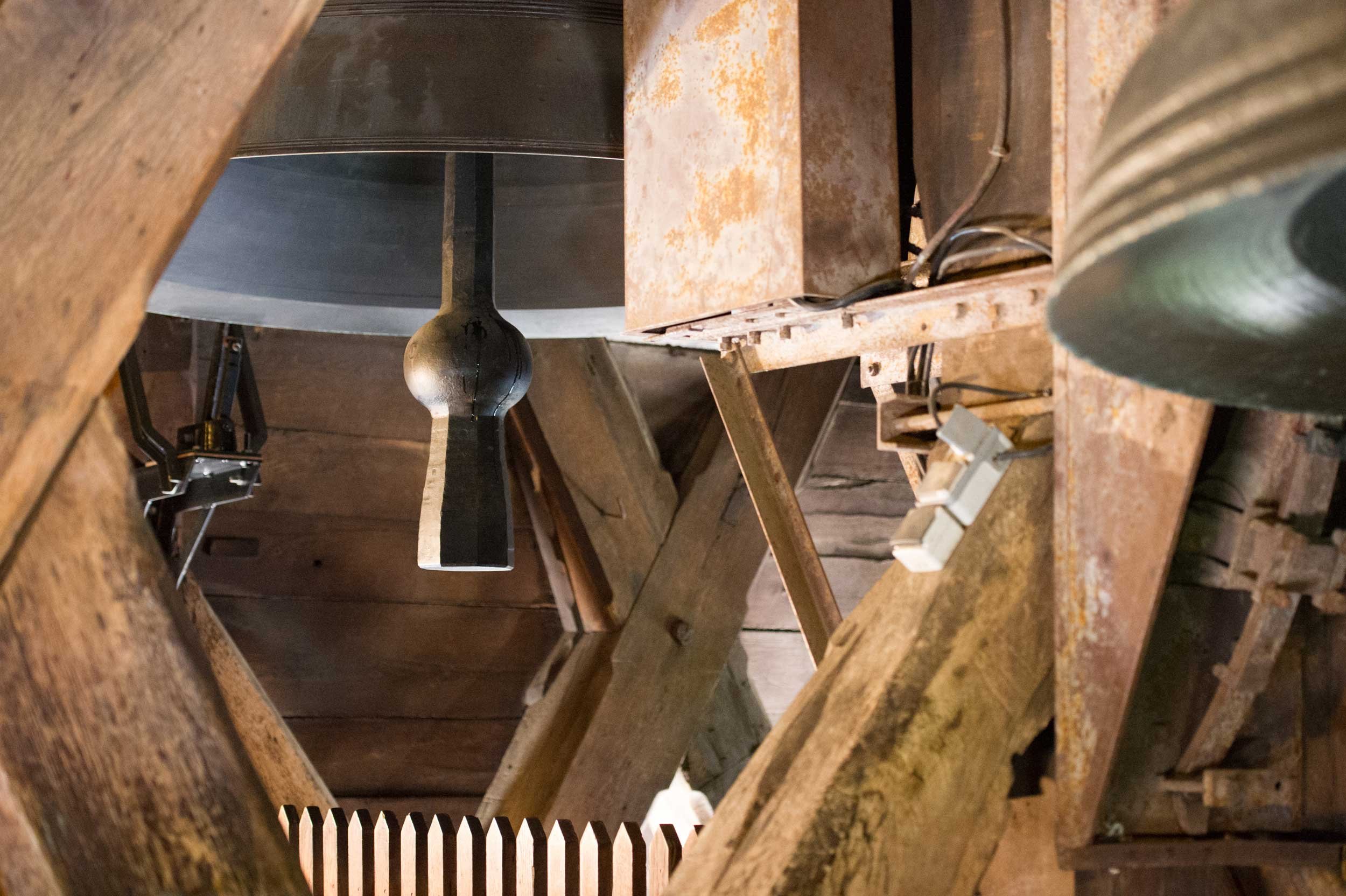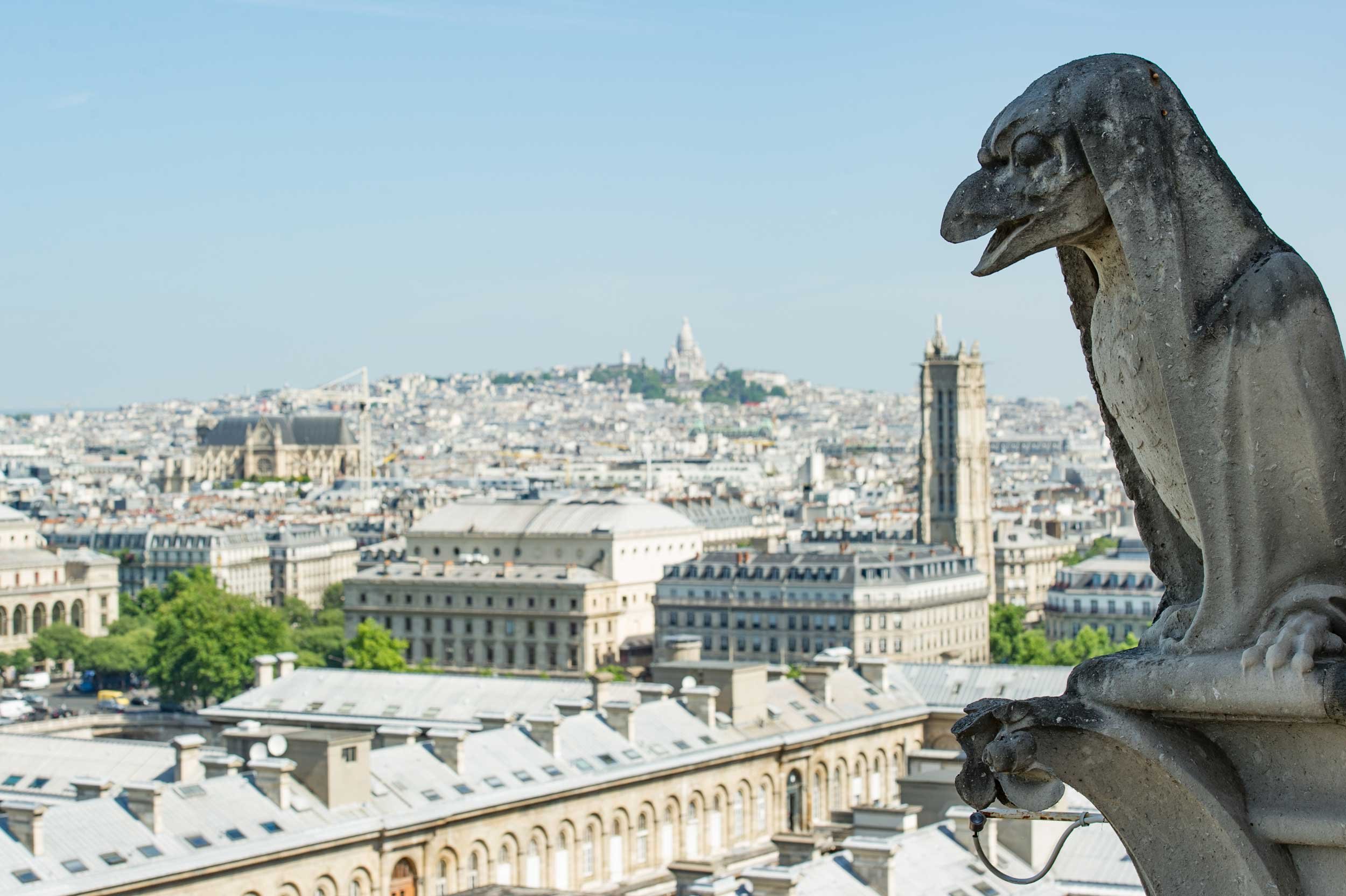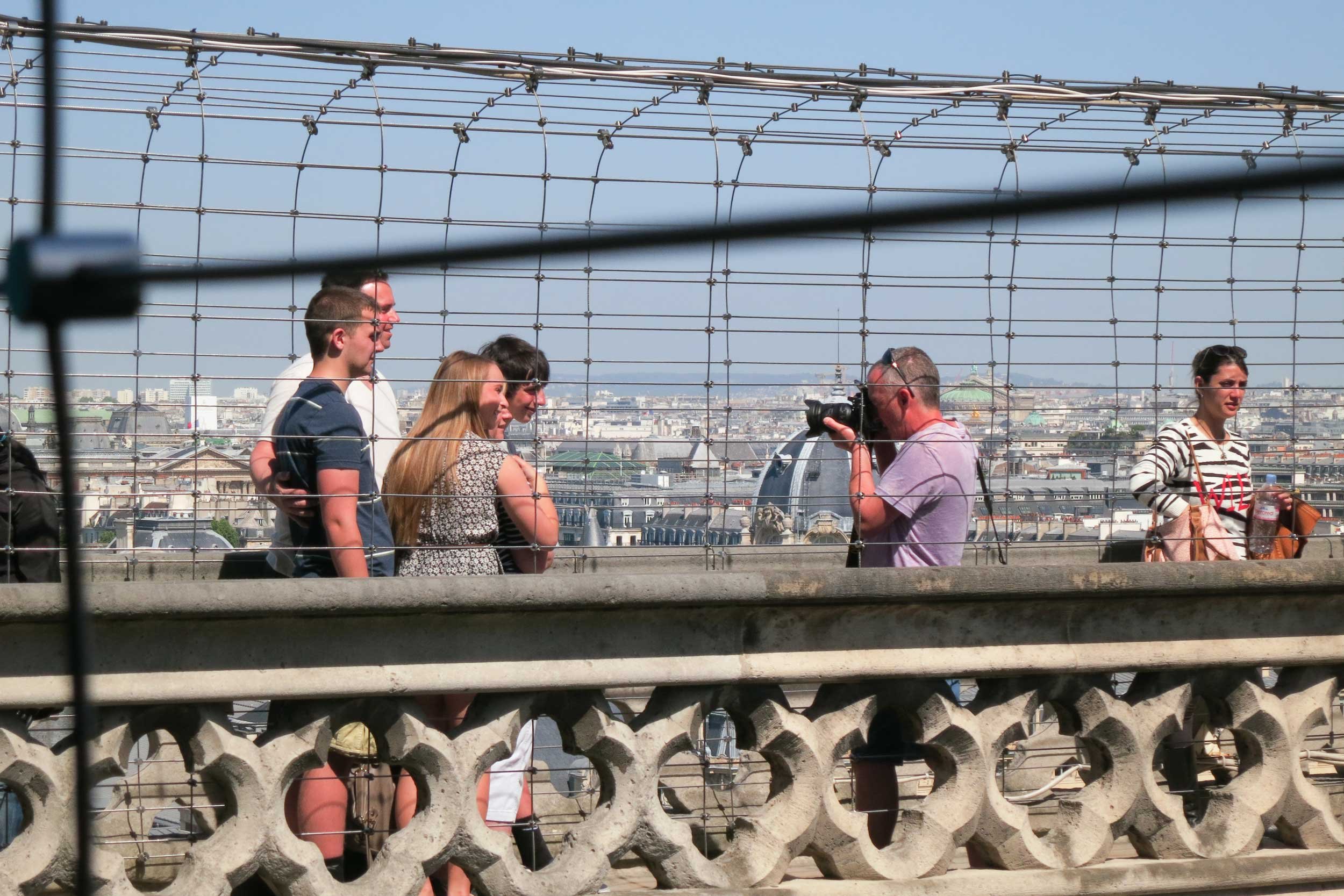Cathédrale Notre-Dame de Paris
The story of the Cathédrale Notre-Dame de Paris, which is located on the eastern end of the Île de la Cité in Paris, begins in the 12th-century. In 1160, Bishop Maurice de Sully had the idea to use the ruins of two earlier churches as a base for a new cathedral. The foundation stone was laid by Pope Alexander III in 1163 and the high altar was consecrated in 1189. The choir, the western facade and the nave were completed by 1250. The porches, chapels, and other embellishments were added over the next 100 years. This, the most famous Gothic cathedral of the Middle Ages, was completed in 1345.
The early gothic towers of Cathédral Notre-Dame de Paris, built between 1210-50, still stand today.
Notre-Dame Cathedral consists of a choir and apse, a short transept and a nave flanked by double aisles and square chapels. Two massive early gothic towers (built 1210–50) crown the western façade.
Inside the cathedral
The doors are adorned with fine early gothic carvings and surmounted by a row of figures of Old Testament kings.
The Old Testament kings on the front facade
The two towers are 68 metres high. The spires with which they were to be crowned were never added. At the cathedral’s east end, the apse has large clerestory windows (added 1235–70). The apse is supported by single-arch flying buttresses of the more daring Rayonnant Gothic style, especially notable for their boldness and grace.
Cathédrale Notre-Dame de Paris as it looked in 2015
The cathedral’s three great rose windows mostly retain the original 13th-century glass. The vibrant colours of the glass required large quantities of pigments, which were often rare and expensive. The blues were created using lapis lazuli, a blue stone mined in Afghanistan. The interior of the cathedral is 130 by 48 metres and the roof is 35 metres high. The original spire from the 13th-century was removed in the 18th-century due to extensive damage and the risk that it posed to pedestrians below.
The beautiful stained glass windows above and below
In the 1790s, during the French Revolution, Notre-Dame was damaged as well as neglected. This inspired Victor Hugo’s novel “The Hunchback of Notre Dame” (1831), which tells us about the building’s deterioration. The story raised public awareness, triggering a move to restore this monument. In the mid 19th-century the cathedral was completely restored by French architect, Eugène Viollet-le-Duc, who also designed a new spire.
View across the roof top, with Eugène Viollet-le-Duc’s spire
Gargoyles are hollow statues located at strategic locations to ensure water drainage and they need to be changed every 100-150 years. Chimeras are purely decorative. Most of the originals have been replaced and the well-known ones on the towers were added during the 19th-century renovations.
A photo from our tour of the towers. An attentive chimera stands guard over Paris.
The twenty-one bronze bells of the cathedral all have names. These bronze bells each weigh two to three tons but they are not the original bells. During the French Revolution, in 1791, most bells were taken down from Notre-Dame and melted to make cannon balls. New bells were only installed during the mid 19th-century. They were then replaced in 2013 for the cathedral’s 850th birthday.
One of the bells of Notre-Dame
Cathédrale Notre-Dame de Paris has been a symbol of the city for hundreds of years. We first glimpsed it in 2004 but were unable to visit until 2009. In 2015, we arrived to take a tour of the towers but the line was too long. While Chris ‘went off’ to enjoy a fashion photography workshop, I took a Discover Walks tour around the outside of the cathedral with a knowledgable local guide who explained it’s various features.
Door decoration
A few days later, we arrived ‘extra early’ to take a tour of the towers. The experience was definitely worth the wait. Apart from the spectacular views across Paris, we were able to take a further set of stairs for views across the roof top to the spire and to see the chimeras and bells ‘up close’.
Photos from our tower tour above and below, Across the roof top, bells and chimeras.
As you can see, we were able to take some amazing photos. Chris was stopped by a Canadian family, asking him advice about their Nikon camera and requesting a family photo.
After assisting the Canadian visitors with questions about their camera, Chris was asked to take a family photo.
Under the forecourt of the cathedral there is a museum, Notre-Dame de Paris Archaeological Crypt, containing relics from the past 2,000 years. A Gallo-Roman temple was the original building on this site and remains from this period, found during archaeological digs between 1965-1972, are able to be seen within the museum.
Looking down on the forecourt, you will notice a set of stairs leading to the museum, Notre-Dame de Paris Archaeological Crypt.
Embedded in the square in front of the cathedral is a tiny plaque with a compass, known as ‘point zéro des routes de France’ (Point Zero of French Roads), a geographic marker of the starting point from which all distances from Paris are measured.
Point Zero
Tragedy struck just after 6:00 pm on 15 April 2019. The cathedral was undergoing some restoration work, with massive scaffolding encasing the spire. It is thought that, during these works, the fire was accidentally started in the cathedral’s attic. Very quickly, 400 pompiers (firefighters) where on the scene to fight the flames and evacuate everyone from the Île de la Cité. They were also able to remove most of the precious relics from the cathedral.
This catastrophic fire burned for several hours. Sadly, there was quite a bit of damage. At exactly 7:50 pm, the cathedral’s famous 19th-century spire fell (video link) and succumbed to the flames. Most of the roof and some of the rib vaultings were destroyed. Fortunately, all of the stained-glass windows survived and the stone towers remained intact. At the time of the fire, we were travelling in France. In a quiet Château in Beaujolais, we shared this historical moment with our hosts, watching in disbelief as the tragedy unfolded on French television. It was horrendous!
During the restoration work, ancient tombs have been discovered under the cathedral. The discovery includes a completely preserved, human-shaped, lead sarcophagus dating from the 14th-century. Prior to the fire, 12 million people per year would visit Notre-Dame. The cathedral is currently closed to the general public whilst it undergoes restoration. The plan is to replicate the 19th-century spire and it is hoped that the cathedral will be ready to open to the public in time for the 2024 Paris Summer Olympics.
Detail of the old 19th-century spire. Hopefully, the 21st-century restoration work will be as spectacular.
In addition to our personal experiences, I have researched this article using the official website, as well as Britannica online and Discover Walks.
Cathédrale Notre-Dame de Paris is located on the Île de la Cité in the 4th arrondissement at 6 Parvis Notre-Dame – Pl. Jean-Paul II 75004 Paris, France. It was named as a UNESCO World Heritage Site in 1991.
À bientôt!
View from the rooftop of Notre-Dame looking along the Seine River







